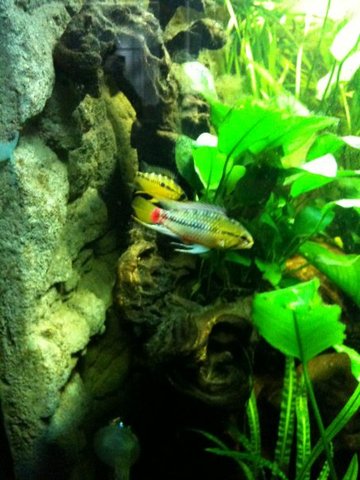Good evening all,
Went looking for a good recent thread on this to no avail before posting.
The subjects of the Coryopedilum Chronicles are coming along nicely, but the adductum anitum and randsii are going a bit slow. I have never been a proponent of going too heavy with fertilizer- and little or none at this early stage in life.
So tonight I decided it might be time to switch over to tap water.
I have researched our Dallas water supply and it has been deemed "moderately hard" and I think will give these seedlings the little extra boost they need right now on the calcium front.
Looking back, I am not sure why I went with RO water this time- maybe because kovachii were the last Chronicles I did. In the sanderianum Chronicles and with other Paphs in general, I have always used tap water.
It has worked out well up to now, but clearly there are some nutritional needs not being met. Additionally, buying and lugging all this water around is a pain- and finally, I am not going to be one of those people who makes extensive study of fertilizer and makes custom blends etc. Sure that will get good results if done properly, but as adaptable as most species are- I think it is overkill.
Anyhow- curious to know who else is watering out of the tap, or has in the past, and your thoughts on the practice (Note- I mean with respect to most Paphiopedilums. I understand this is not generally a viable option for Phragmipediums).
Went looking for a good recent thread on this to no avail before posting.
The subjects of the Coryopedilum Chronicles are coming along nicely, but the adductum anitum and randsii are going a bit slow. I have never been a proponent of going too heavy with fertilizer- and little or none at this early stage in life.
So tonight I decided it might be time to switch over to tap water.
I have researched our Dallas water supply and it has been deemed "moderately hard" and I think will give these seedlings the little extra boost they need right now on the calcium front.
Looking back, I am not sure why I went with RO water this time- maybe because kovachii were the last Chronicles I did. In the sanderianum Chronicles and with other Paphs in general, I have always used tap water.
It has worked out well up to now, but clearly there are some nutritional needs not being met. Additionally, buying and lugging all this water around is a pain- and finally, I am not going to be one of those people who makes extensive study of fertilizer and makes custom blends etc. Sure that will get good results if done properly, but as adaptable as most species are- I think it is overkill.
Anyhow- curious to know who else is watering out of the tap, or has in the past, and your thoughts on the practice (Note- I mean with respect to most Paphiopedilums. I understand this is not generally a viable option for Phragmipediums).




